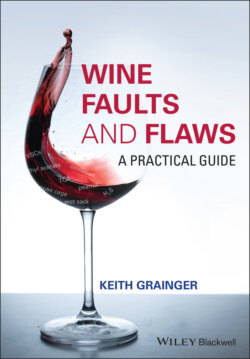Читать книгу Wine Faults and Flaws - Keith Grainger - Страница 84
2.7.10.2 Balance
ОглавлениеBalance is the interrelationship between all the taste and tactile sensations and the components that create them. If anyone or a small number of them dominate, or if there is a deficiency of any of them, the wine is unbalanced. An easy to understand example is that a white wine described as sweet or luscious but with a low acidity will be flabby and cloying. In other words, it is unbalanced. A red wine with a light body, light flavour intensity, low to medium alcohol but high tannin will feel very hard astringent and unbalanced. A balanced wine has all the sensations in proportions that make the wine a harmonious whole. In a well‐balanced wine, the sensations are seamlessly integrated.
If any component or several components are making the wine unbalanced, these should be noted. However, the state of maturity of a wine is an important consideration. Whilst a very low quality wine may never be in balance at any stage in its life‐cycle, a high‐quality wine, particularly reds, will often only achieve balance when approaching maturity. Tannins and acidity may dominate in youth. The taster needs to evaluate all the components and the structure of the wine to anticipate how these will be interrelated at maturity. Balance is a major consideration when assessing wine quality, and wines that are substantially ‘out‐of‐balance’ may be considered as flawed, as will be briefly discussed in Chapter 14.
